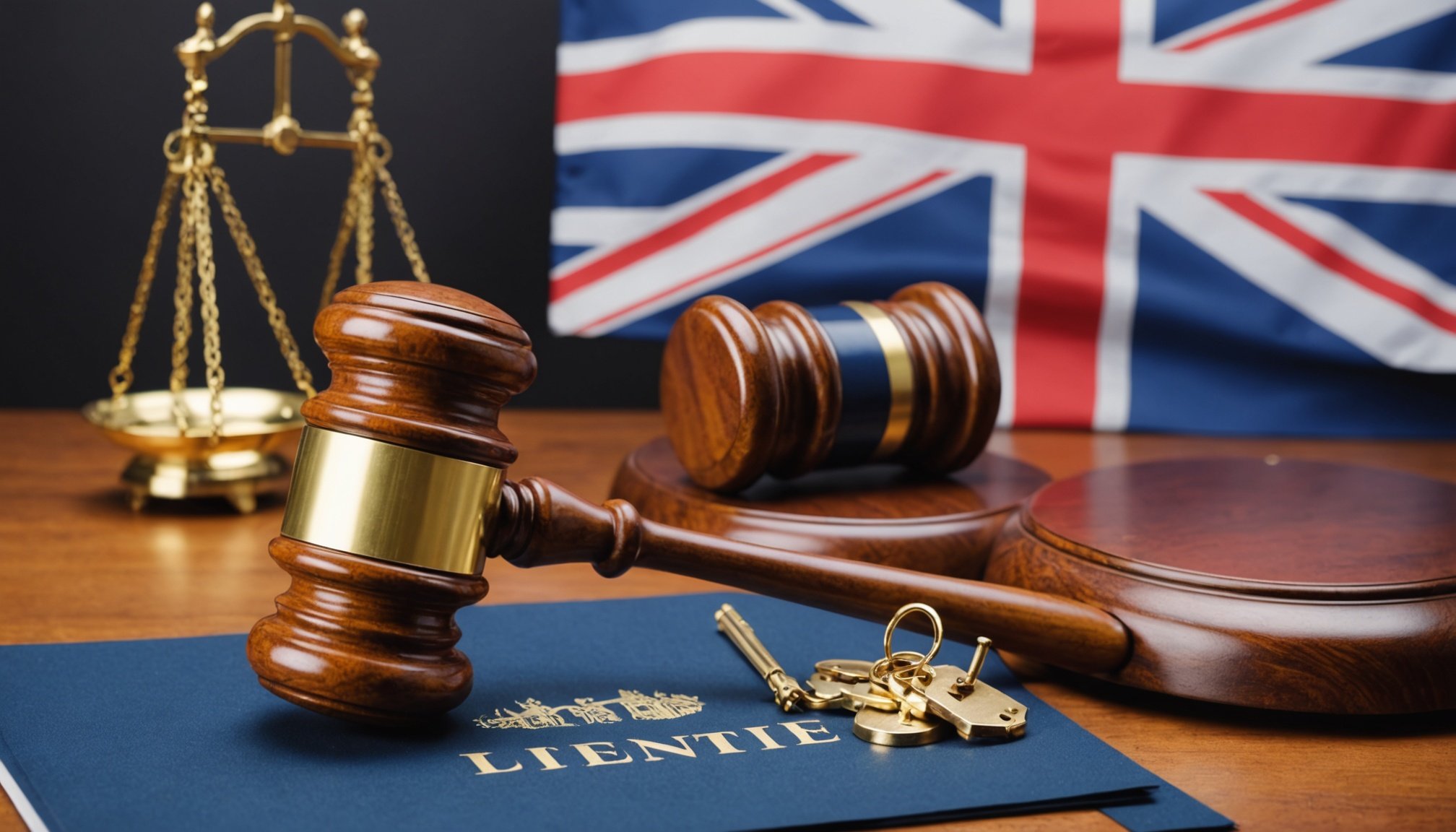Understanding Joint Ventures in the UK
Joint ventures in the UK represent a strategic collaboration between two or more parties to achieve a common business goal while sharing ownership, returns, and risks. These collaborations emphasise innovation and resource sharing, often leading to competitive advantages in various industries. Joint ventures are particularly valued for enabling companies to enter new markets and leverage local expertise.
Key Features and Types
There are several key features to understand about UK joint ventures, including flexibility in structure and purpose. Partners may establish a new entity or simply cooperate in a contractual arrangement without forming a separate legal entity. Common types include:
Topic to read : Mastering legal tactics for outsourcing it services from the uk to global markets beyond the eu
- Equity Joint Ventures: Involving shared ownership of a new or existing company.
- Contractual Joint Ventures: Based on agreements without shared ownership.
Benefits and Risks
The benefits of joint ventures include shared resources, reduced financial burdens, and market expansion opportunities. However, they come with risks such as potential conflicts between partners and challenges in joint venture structure management. Understanding these dynamics is crucial to planning and executing a successful venture.
Legal Framework for Joint Ventures
Understanding the joint venture law landscape in the UK is essential for any partnership. The main legislation governing these arrangements includes the Companies Act 2006 and the Partnership Act 1890, which outline the basic rules for forming and operating joint ventures. It’s also important to comply with the Competition Act 1998 to avoid any anti-competitive practices.
Also to discover : Unlocking Success: Essential Steps for UK Businesses to Secure an Alcohol License
Several regulatory bodies have a significant role in overseeing UK joint venture regulations. The Financial Conduct Authority (FCA) and the Competition and Markets Authority (CMA) are two key entities that ensure compliance with financial and competition laws. They help maintain fair business practices and protect consumer interests.
Adhering to legal compliance is crucial to avoid penalties and ensure the smooth operation of a joint venture. A well-structured legal framework enables partners to define roles, responsibilities, and decision-making processes clearly. By aligning with these regulations, joint ventures can effectively manage risks and focus on achieving their business objectives. Establishing a comprehensive legal framework is not just a precaution but a strategic advantage, allowing companies to create lasting partnerships and thrive in the competitive UK market.
Conflict Resolution in Joint Ventures
Joint venture disputes often arise from differences in strategic alignment, resource allocation, or profit distribution. To manage these conflicts effectively, it’s crucial to employ structured conflict resolution methods. These may include establishing clear communication channels and setting up conflict escalation processes.
One practical method involves the use of mediation in joint ventures. Mediation acts as a neutral ground where an impartial mediator assists parties in finding a mutually agreeable solution. This process fosters open dialogue and can prevent disputes from escalating into costly legal battles. Another approach is arbitration, where an arbitrator makes binding decisions based on evidence presented by both sides.
Understanding these structured processes enables partners to address disagreements without jeopardising the joint venture’s objectives. Successful conflict resolution not only preserves business relationships but also enhances decision-making and operational efficiency. Adopting a proactive approach to conflict resolution ensures that partners can overcome obstacles and maintain a focus on shared goals. In this way, businesses can leverage the strengths of their collaboration, leading to more resilient and adaptive partnerships in the competitive landscape of the UK market.
Key Pitfalls to Avoid
Navigating the complex landscape of joint venture pitfalls requires astuteness, particularly when it comes to legal risks. Oversights during dissolution can lead to substantial financial and operational consequences. One common mistake involves neglecting legal procedures, which can result in extended disputes, costly litigation, and damage to corporate reputation.
To mitigate these challenges, it is essential to adhere to a structured approach when winding down operations. Particularly crucial is ensuring that all contractual obligations and regulatory requirements are thoroughly understood and executed. The implications of failing to respect these constraints can be severe, including unforeseen tax liabilities and potential forfeiture of assets.
Avoiding joint venture pitfalls also involves maintaining proactive and transparent communications among partners. This can prevent misunderstandings and minimise conflicts that may otherwise escalate. By anticipating common mistakes and planning accordingly, businesses can safeguard their interests. Employing a precise dissolution strategy not only protects joint venture participants legally but also secures financial interests, helping avoid distressing financial losses and maintaining corporate goodwill.
Steps to Dissolve a Joint Venture
Dissolving a joint venture in the UK requires meticulous planning and adherence to a structured legal procedures. Initially, partners should conduct a thorough assessment of the venture’s status, evaluating financial health, outstanding obligations, and potential challenges. This assessment forms the foundation of a joint venture dissolution process.
Once partners agree to dissolve, a comprehensive step-by-step guide aids the dissolution steps. First, review the joint venture agreement for termination clauses. These provisions dictate the necessary actions and timeframes. Next, draft a formal dissolution plan outlining roles and responsibilities.
Notify stakeholders, such as employees, clients, and suppliers, to maintain transparency and trust. It is crucial to submit relevant documentation to regulatory authorities to avoid legal procedures lapses. This ensures compliance with statutory requirements and minimises legal risks.
Important documentation includes asset distribution agreements, final financial statements, and any required regulatory forms. Proper documentation serves as evidence of adherence to protocols and shields parties from unforeseen liabilities.
Dissolving a venture requires juggling legal, financial, and operational elements. Hence, seeking expert joint venture dissolution process advice ensures a smoother transition, preserves reputations, and secures financial interests.
Case Studies on Joint Venture Breakups
Exploring joint venture case studies offers valuable insights into the complexities of these business arrangements and their eventual breakups. By examining legal precedents and real-world examples, companies can better navigate potential pitfalls. Such analysis provides an understanding of successful and failed ventures, highlighting crucial learnings for future collaborations.
Successful Joint Venture Breakup
One notable example of a successful joint venture breakup involved clear communication, mutual respect, and adherence to predefined exit strategies. By focusing on collaborative solutions and maintaining transparency, the parties involved managed to amicably dissolve the partnership while preserving business relationships and avoiding litigation.
Lessons Learned from Failed Joint Ventures
In contrast, failed joint ventures often stem from a lack of strategic alignment and poor conflict resolution methods. A high-profile case highlighted the ramifications of disregarded contractual obligations and mismanaged negotiations, resulting in financial losses and damaged reputations.
Key Takeaways from Recent Legal Cases
Recent legal cases underscore the importance of clear joint venture structure and comprehensive agreements. These cases reveal that meticulous planning and adherence to legal requirements are essential for successful dissolutions. Understanding these lessons equips businesses to anticipate challenges and cultivate more robust partnerships in the future.
Resources for Legal Guidance
Navigating the complexities of a joint venture requires access to comprehensive legal resources. Recommended texts include “Joint Ventures: Law, Practice, and Forms” by Sweet & Maxwell, which offers in-depth insights into UK joint venture regulations. This provides valuable reference material for understanding the intricate nature of joint venture structure.
For those seeking joint venture advice, professional organisations such as the Law Society of England and Wales offer directories of specialists in joint venture law. Additionally, the British Chamber of Commerce can provide regional insights and networking opportunities, facilitating access to legal consultation services tailored to specific needs.
Engaging with a trusted legal consultant is vital. Notable practitioners like Eversheds Sutherland LLP or Allen & Overy LLP specialise in guiding businesses through both structuring and dissolution processes. Reaching out to these skilled professionals ensures informed decision-making, minimising legal risks and enhancing strategic outcomes.
By leveraging these resources for legal guidance, businesses can effectively address challenges, ensuring robust and well-structured ventures. This strategic approach not only aids in legal compliance but also secures the financial and operational health of joint ventures in the UK market.











